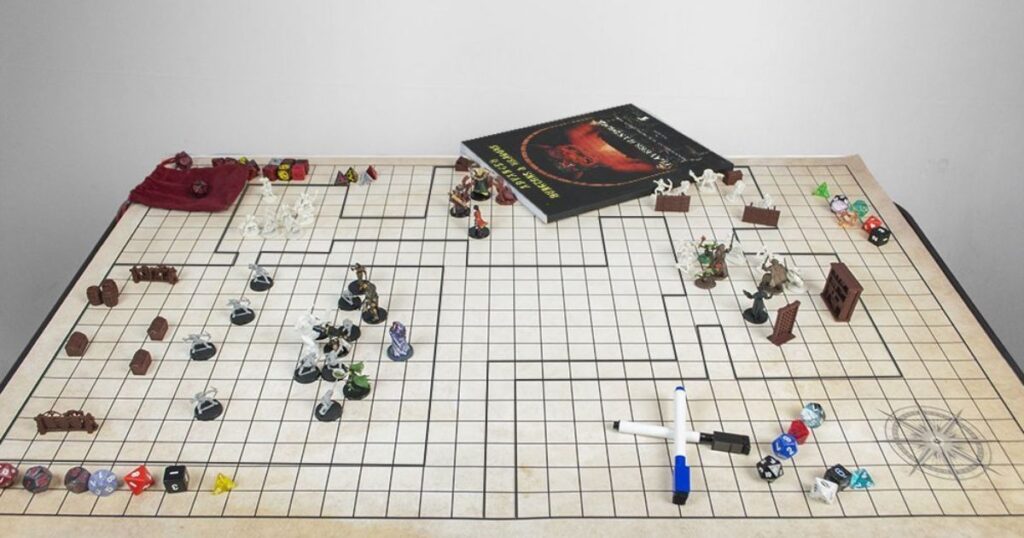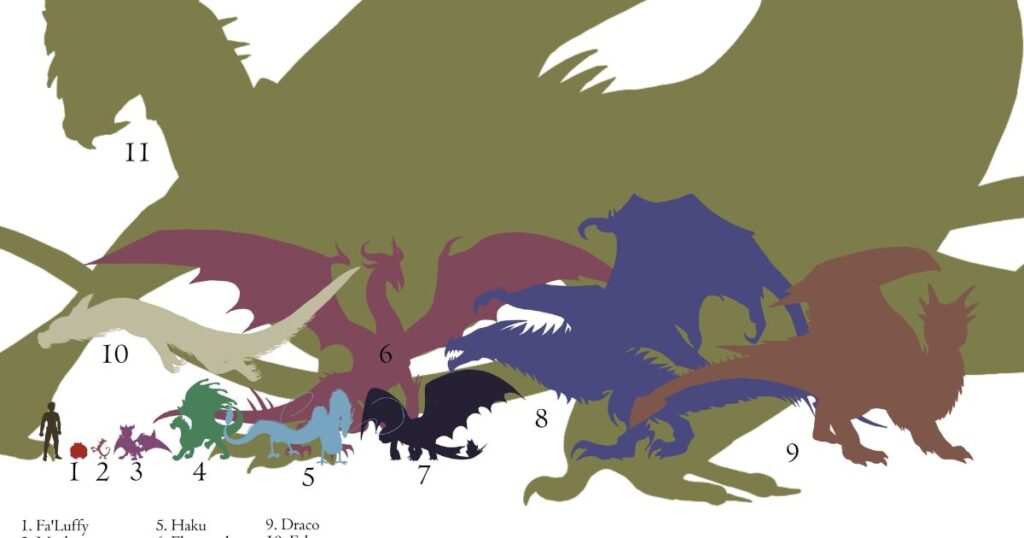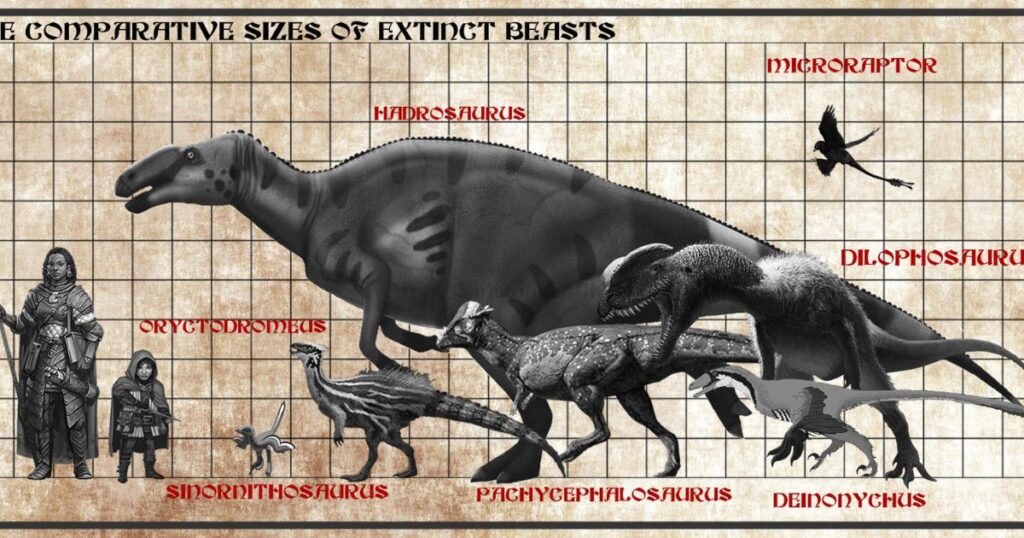Imagine stepping into a world where giants tower above you, their footsteps thundering like earthquakes, and tiny creatures scurry at your feet, their voices mere whispers in the wind. Welcome to the realm of Dungeons & Dragons, where size truly matters.
Understanding the intricacies of the D&D Size Chart is a game-changer, allowing you to immerse yourself fully in the rich tapestry of this beloved tabletop RPG.
In the ever-expanding multiverse of D&D, the Size Chart serves as a crucial guide, dictating how creatures interact with their surroundings and each other.
From the diminutive fairies to the colossal behemoths, each size category brings its own unique challenges and opportunities, shaping the very fabric of your adventures.
What is the D&D Size Chart?
The D&D Size Chart is a comprehensive reference system that categorizes creatures and objects based on their physical dimensions, including height, weight, and overall bulk.
This vital tool not only adds depth and realism to the game world but also governs various mechanics, interactions, and the level of immersion you experience.
Mastering the Size Chart is akin to unlocking a secret language, enabling you to navigate the intricate web of rules and mechanics that define the game’s dynamics.
Whether you’re a seasoned adventurer or a newcomer to the realms of D&D, grasping the nuances of this chart will undoubtedly elevate your gaming experience to new heights.
Exploring the Size Categories
The D&D Size Chart consists of six distinct categories, each with its own set of characteristics and examples. Let’s delve into the wondrous world of sizes, from the smallest to the most gargantuan:
| Size Category | Space Required (ft.) | Height or Length (ft.) | Weight (lbs.) | Examples |
| Tiny | 2.5 x 2.5 | 6 in. – 2 ft. | 1 – 8 | Imp, Sprite |
| Small | 5 x 5 | 2 ft. – 4 ft. | 8 – 60 | Goblin, Halfling |
| Medium | 5 x 5 | 4 ft. – 8 ft. | 60 – 500 | Human, Orc |
| Large | 10 x 10 | 8 ft. – 16 ft. | 500 – 2 tons | Horse, Troll |
| Huge | 15 x 15 | 16 ft. – 32 ft. | 2 – 16 tons | Giant, Dragon |
| Gargantuan | 20 x 20 or larger | 32 ft. or larger | 16 tons or more | Kraken, Tarrasque |
Tiny
Imagine the flutter of gossamer wings or the pitter-patter of tiny feet. The Tiny category encompasses creatures no larger than 2 feet in height or length and weighing a mere 8 pounds or less.
Examples of Tiny beings include mischievous imps, whimsical sprites, and other diminutive denizens of the D&D multiverse.
Small
Slightly larger but still compact, the Small category encompasses creatures ranging from 2 to 4 feet in height and weighing between 8 and 60 pounds.
This category includes the cunning goblins, the resilient halflings, and other pint-sized adventurers who prove that size is no measure of courage.
Medium
Ah, the human scale is the category that most players and their characters call home. The Medium size encompasses beings between 4 and 8 feet tall, weighing between 60 and 500 pounds.
From the stalwart humans to the formidable orcs, this category represents the common ground upon which many epic tales unfold.
Large
As we ascend the Size Chart, we enter the realm of the imposing. Large creatures, ranging from 8 to 16 feet in height and weighing between 500 pounds and 2 tons, command respect and awe.
Imagine the thunderous hooves of a mighty warhorse or the menacing growl of a ferocious troll – these are the denizens of the Large category.
Huge
Prepare to crane your neck in wonder as we encounter the Huge size category. These towering beings, measuring between 16 and 32 feet tall and weighing from 2 to 16 tons, are the stuff of legends.
From the majestic giants that stride across the land to the fearsome dragons that rule the skies, the Huge category is a testament to the grandeur of the D&D world.
Gargantuan
At the pinnacle of the Size Chart, we find the truly colossal – the Gargantuan creatures. Measuring 32 feet or more in height and weighing a staggering 16 tons or greater, these behemoths inspire both awe and terror.
The mighty kraken, whose tentacles can crush ships like twigs, and the legendary tarrasque, a living embodiment of destruction, are but two examples of the Gargantuan category’s incredible diversity.
Also read this Post: DEMYSTIFYING FREE CYBER INSURANCE AND SILVERFORT
Mechanics and Gameplay Implications

While the Size Chart may seem like a mere classification system, its implications extend far beyond simple categorization. In the intricate web of D&D mechanics, size plays a pivotal role, influencing everything from movement and combat tactics to environmental interactions.
Movement and Reach
A creature’s size significantly impacts its movement and reach capabilities. Larger beings often have a greater stride, allowing them to cover more ground with each step.
Conversely, smaller creatures may have an advantage in tight spaces, able to squeeze through crevices and navigate narrow passages with ease.
In combat, size also dictates reach – the distance at which a creature can effectively strike or engage with opponents. A giant’s massive arms can sweep through vast areas, while a tiny creature might need to get up close and personal to land a telling blow.
Squeezing and Tight Spaces
The D&D world is filled with treacherous tunnels, narrow corridors, and claustrophobic crevices. The Size Chart becomes invaluable in navigating these tight spaces, as the rules for squeezing and squeezing penalties vary depending on a creature’s size.
For example, a Medium creature can squeeze through a space as small as 2.5 feet wide, but with reduced movement and potential disadvantages on attack rolls and ability checks.
Meanwhile, a Gargantuan creature might find it nearly impossible to navigate such tight quarters, forcing them to find alternative routes or risk becoming stuck.
Carrying Capacity and Encumbrance
Size also plays a crucial role in determining a creature’s carrying capacity and encumbrance. Larger beings can typically bear greater loads, while smaller creatures may struggle to carry even the most modest of burdens.
The Size Chart provides guidelines for calculating a creature’s maximum carrying capacity based on its size and Strength score. Exceeding these limits can lead to encumbrance penalties, slowing movement and potentially hindering other actions.
Environmental Interactions
From climbing obstacles to manipulating objects, a creature’s size can significantly impact its ability to interact with the environment. A Tiny creature might have trouble scaling a towering cliff or lifting a massive boulder, while a Huge giant could effortlessly clear such hurdles.
DMs and players alike must consider size when designing encounters and navigating the game world, ensuring that challenges are appropriately scaled and that size-based advantages and disadvantages are accounted for.
Pro Tips for Embracing Size in Your Game
To truly harness the power of the D&D Size Chart and enhance your gaming experience, consider the following pro tips:
- Diverse Encounters: Create encounters featuring a mix of differently sized creatures. This variety not only adds an extra layer of challenge but also presents unique tactical opportunities for players to leverage size-based advantages or mitigate size-based disadvantages.
- Descriptive Narration: As a Dungeon Master or player, vividly describe the awe-inspiring scale of various sizes. Paint a picture of towering giants looming over the party or tiny pixies flitting about, adding depth and immersion to your adventures.
- Tactical Considerations: Encourage players to think tactically about size in combat. Suggest strategies for using size advantages, such as larger creatures bullying smaller foes or smaller creatures seeking cover and concealment. Conversely, discuss techniques for overcoming size disadvantages, fostering creative problem-solving and teamwork.
Size Chart Variations and Homebrew Rules

While the official D&D Size Chart provides a solid foundation, some gaming groups and Dungeon Masters have experimented with alternative interpretations or homebrew rules to better suit their playstyles. These variations can introduce new dynamics and challenges, keeping the game fresh and engaging.
For instance, some groups have introduced additional size categories, such as Colossal or Minuscule, to accommodate even more extreme ends of the size spectrum.
Others have tweaked the mechanics associated with size, adjusting movement rates, carrying capacities, or squeezing rules to better align with their preferred gameplay experience.
As a DM or player, feel free to explore these variations and homebrew rules. However, it’s essential to ensure that any changes are consistently applied and communicated to all players, maintaining a fair and enjoyable experience for everyone involved.
We invite you to share your own Size Chart variations or house rules in the comments section below. Who knows? Your innovative ideas might inspire others and contribute to the ever-evolving tapestry of D&D gameplay.
Conclusion
The D&D Size Chart is more than just a reference tool; it’s a gateway to immersive, dynamic gameplay experiences. B
y mastering its intricacies, you unlock a world where size truly matters, where the grandeur of colossal beings and the tenacity of diminutive adventurers intertwine in a tapestry of epic proportions.
Embrace the Size Chart, and let your imagination run wild in your Dungeons & Dragons adventures.
Whether you’re a seasoned veteran or a newcomer to the realms of fantasy, understanding the nuances of size will elevate your gaming experience to new heights.
FAQ’s
What is a D&D Size Chart?
A D&D Size Chart serves as a crucial reference tool within Dungeons and Dragons (D&D), assisting in determining the size category of creatures or objects encountered in the game world.
What are the Different Size Categories in a D&D Size Chart?
The standard size categories within the D&D Size Chart encompass Tiny, Small, Medium, Large, Huge, Gargantuan, and Colossal. Each category delineates a distinct range of physical dimensions.
How is Size Determined in Dungeons and Dragons?
Size in Dungeons and Dragons is established by evaluating the physical attributes of the creature or object, encompassing factors such as height, weight, and overall bulk. The D&D Size Chart serves as a fundamental tool for categorizing entities into predefined size categories.
Why is the D&D Size Chart Important in Gameplay?
The significance of the D&D Size Chart in gameplay lies in its impact on various mechanics, including movement, reach, and combat dynamics.
It plays a pivotal role in shaping how creatures navigate the game world and how interactions unfold between entities.
Can Creatures of Different Sizes Occupy the Same Space in a D&D Size Chart?
In general, creatures of differing sizes cannot occupy identical spaces within Dungeons and Dragons. The D&D Size Chart offers insights into the spatial requirements for creatures to coexist comfortably and engage in combat.
However, exceptions to this rule may exist under specific circumstances or through the application of special rules.

Dennis, a seasoned tech professional with 5 years of expertise in the field. With a passion for innovation, he’s dedicated to delivering cutting-edge solutions through our website.







